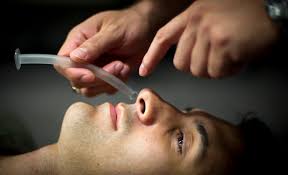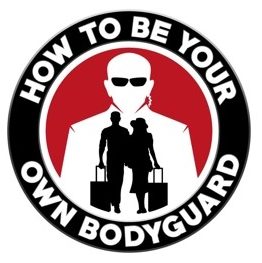Welcome to your resource page, where I’ll include links to books, trainers, websites, resources, and products I recommend in the book. In case you’ve come here directly, rather than listing resources in the book “How To Be Your Own Bodyguard,” which would soon become out of date, I’m putting them all here.
Books I recommend: These links will take you to Amazon, where you can snag them. All are highly recommended. If there’s one you think that should be here that’s not, let me know, and if I read it and like it, I’ll stick it up.
RECOMMENDED READING
Leadership and Training for the Fight: Great book by former Delta operator Paul Howe.
Deadly Force: If you carry a sidearm for defense, you absolutely need to read this.
Combatives for Street Survival: Kelly McCann is a legend in the field of personal protection.
Be Fast, Be Accurate, Be the Best: Bill Rogers runs what is considered by most to be the premier shooting school in the world
Defensive Handgunning: Again, if you carry, John’s book is a must-read.
Concealed Carry and Home Defense Fundamentals: Michael Martin is a Master Instructor with Int Assoc of Law Enforcement Firearms Instructors.
Hand Gun Combatives: Dave Spaulding is considered to be one of the best firearms instructors in the country.
Verbal Judo: All of my students rate this as one of their favorite books and most practical.
Gun Fight: Richard Nance’s new release is required reading for those smart enough to integrate empty hands and weapons
The Fence: Geoff Thompson is one of the UK’s most respected self-defense instructors. An excellent book on controlling your personal space.
Truth About Self Protection: Another great book by Mas Ayoob
Street Smarts, Firearms & Personal Security: Jim Grover is a nom de plume for Kelly McCann, so you know it’s good.
Watch My Back: Another great book by Geoff Thompson
The Little Black Book of Violence: A great book by Lawrence Kane.
Facing Violence – Preparing for the Unexpected: A Rory Miller book. Everything by this guy is good.
Working with Warriors: Dennis Martin talks about various people he’s worked with over the years. Tons of useful insights.
The SAS Self-Defense Handbook: John “Lofty” Wiseman is a legend amongst special forces around the world.
Get Tough: by Captain Fairbairn, this is one of the WWII staples that paved the way for so many of the combatives guys today
The World’s Most Dangerous Places: A terrific book by a guy who’s visited all of them. You won’t be disappointed.
FIRST AID KIT
Combat requirements and what the average person will need to walk home during a power outage are slightly different. The first list is recommended daily carry for doomsday scenarios, emergency personnel, people who carry firearms, etc. Think gunshot wounds, explosions, and stabbings, etc. These links are to products that are used and recommended by the pros. There’s a lot of cheap knock-off stuff out there that will cost you in the long run.
COMBAT KIT

Dark Angel medical kits are good to go if you don’t want to buy it all piecemeal.
GET YOU HOME KIT
All of the highlighted links will take you to Amazon. I’ve already saved you a ton of time because these go directly to products that I use and recommend, and using them will save you grief. Notice, for example, the antibiotic cream link takes you to Polysporin and not a triple antibiotic. That’s because a percentage of the population is allergic to the latter. I didn’t put a link to Aspirin for obvious reasons.
Aspirin (or similar), Immodium (anti-diarrhea), Antacids, Laxative, Lip Balm, Hydro-cortisone Cream, Antibiotic Cream, Calamine Lotion, Insect Bite Wipes, Gloves (latex or nitrile), Band-Aids, Butterfly Bandages, Antiseptic Wipes, Sterile Gauze, Wound Dressing, Eye Pad, 1st Aid Tape, Elastic Bandage, 1 Sling (triangular bandage), Safety Pins, Finger Splint, Thermometer, Tweezers, Scissors, CPR mouthpiece.
You can put together one of these relatively cheaply or buy a ready-made kit. Two good ones are listed below.
Traveler’s 1st Aid Kit (the one I use)
FIRST AID TRAINING
Active Response Training: Greg’s course is second to none. If you get a chance, go.
Lone Star: I have not yet trained with these guys but hear nothing but good things from people in the industry I respect. On my bucket list.
NOLS: Wilderness First Aid Training is great. You’ll learn so much more on one of these than with the local Red Cross due to the nature of the beast.
BUG IN BAG
This is a list of links to all the resources I have in my B.I.B.
Discrete Back Pack: I tend to avoid tactical bags because too many people know the users tend to be gun-bearing. Grab a laptop backpack instead.
Survival Blankets: These are great because they’re super lightweight and can even be used as signaling devices.
Poncho: Good for hiking during downpours. Think about the storms in Houston and Puerto Rico recently. That’s the environment you might be moving in.
Beef Jerky: Super lightweight source of protein.
Protein Bars: They take up little room, last for a long time, and are cheap.
Kendal Mint Cake: Used by UK special forces, Edmund Hillary and Shackleton et al., it’s a great energy source.
Water Bottle: Nalgene is the way to go.
Purification Tablets: I don’t want to tote tons of water. It weighs too much, so these permit a resupply en route home.
Survival Straw: Another alternative to the tablets and bottles.
Lighter: Hard to beat a Bic for this. (see the book as to why they’re superior to the Zippo brand).
Fire Starter: Good alternative to the lighter in case it’s broken or empty.
Para Cord: So many uses…a must-have.
Head Lamp: Hands-free light is critical while doing first-aid, for example.
Flashlight: Tactical flashlights have better options than standard, such as strobe capabilities and higher intensity light.
Survival Candles: Cheap, long-term light source that doesn’t rely on batteries.
Key Chain Light: Handy alternative to digging out the bigger lights all the time.
Mil-Spec Glow Sticks Handy, cheap, and long-lasting light source. Can also be an improvised flare or signaling device.
Swiss Army Knife: Got to have piece of kit. I recommend this one.
Multi-Tool: Leatherman was the original, but there are many copycats now.
Fixed Blade Knife: In jurisdictions that permit, another essential piece of kit. I prefer Cold Steel or Bench Made.
Titanium Pry Bar: Useful for prying open anything, pinning anyone down.
Latex or Nitrile Gloves: For first aid again.
Leather Gloves: Good if you have to go “off-road” on your hike home.
Handi-Wipes: Too many uses to list here.
Military Grade Duct Tape: Way stronger than the civilian equivalent.
Bandana: Get a couple of these. Read the book, and you’ll see why.
1st Aid Kit: The one I personally use and took on the Trans America Trail.
Whistle: Far more effective than yelling, and the noise will carry a lot further.
Compass: Again, “off-road” a vital piece of kit.
AM/FM Radio: This will keep you up to date with what’s going on.
Rock Straps: A far far superior alternative to bungee cords.
Remember, the contents of your kit will vary depending on the climate and where you live. I’m not going to have a bunch of cold weather gear if I live in Florida, whereas I’d have a ton of it if I lived in Alaska.
TRAVEL RESOURCES
Smoke Hood: Read the section in the book on the smoke in aircraft and also hotel fires. One of these will buy you precious time.
Rubber Door Wedge: Cheap, portable, light, and with peace of mind. Kick one of these under your door while sleeping for security.
Portable Door Alarm: Another simple, portable lightweight way to have peace of mind in your hotel room.
Money Belt: Keep the bulk of your cash in one of these and only carry a small amount in your pocket/wallet. The thief gets that and not the rest.
Neck Wallet: An alternative to the money belt. A lot of these are big enough to keep your passport in as well.
Bra Wallet: For girls who don’t like either the neck or belt version, this is another secure option for keeping the bulk of your cash separate.
Lap Top Alarm: Still the most stolen article around the world. Keep them safe with one of these, and you’ll be alerted if someone tries to get yours.
USB: A simple key ring USB like this can be used to keep copies of all your important documents without schlepping around photocopies.
Tactical Pen: Despite not being the weapon, they’re touted to be still handy to keep around if you know what you’re doing with them.
Survival Bracelet: Give up any thoughts of using the handcuff key against law enforcement. That’s illegal. Against bad guys, though…have at it.
SPOT: This is a simple GPS tracking device. Put it in your luggage, vehicle, or whatever, and you can track it in real time.
Travel Insurance: Most clients I traveled with used these guys.
Medical Air Ambulance: These guys can fly in, grab you anywhere in the world and get you back to civilization while providing medical care the whole way.
BLOGS WORTH READING
There are only two blogs I currently subscribe to. These are both well worth reading.
Active Response Training: By Greg Ellifritz, who seems to cull the very best advice from everywhere. The weekend knowledge dump is priceless.
Tactical Professor: Claude Werner is a legend in the shooting industry for many reasons. A deep thinker, his blog is full of great information.
SITES TO CHECK OUT TRAVEL ADVISORIES
US Govt Site: This is my first port of call before venturing off somewhere.
C.D.C: This is the Center for Diseases Control and Prevention. A great resource for checking for outbreaks and what vaccinations are necessary.
Nations Online: This site culls information and advisories from various governments around the world.
W.H.O.: The world health organization is similar to the C.D.C. in its role. I always checked both when traveling with clients.
C.I.A. Fact Book: You can get a lot of useful background information about off-the-grid places you might want to visit. CNN has better up-to-date info though.
CNN: These guys often beat the govt to the stories, so always worth a look.
